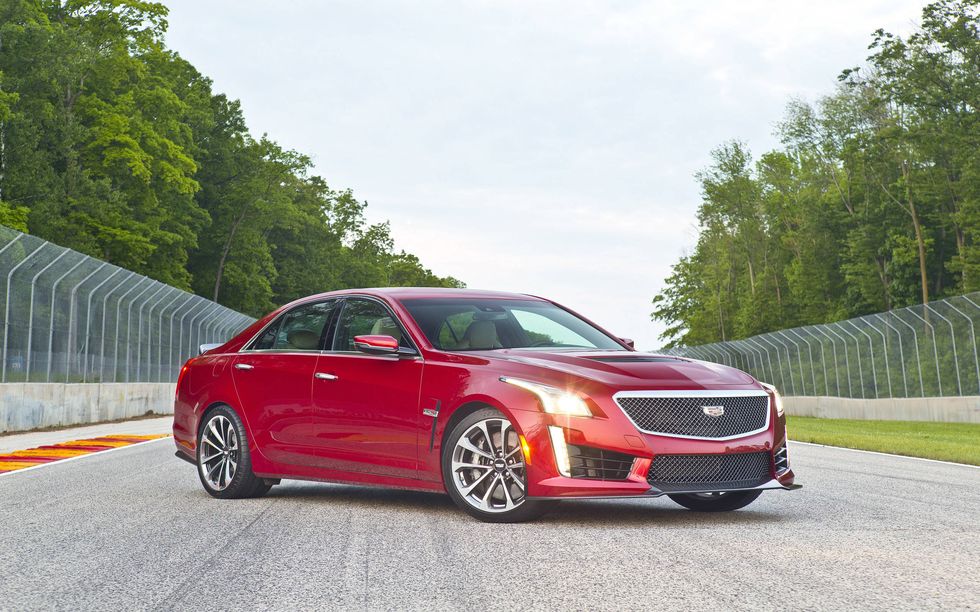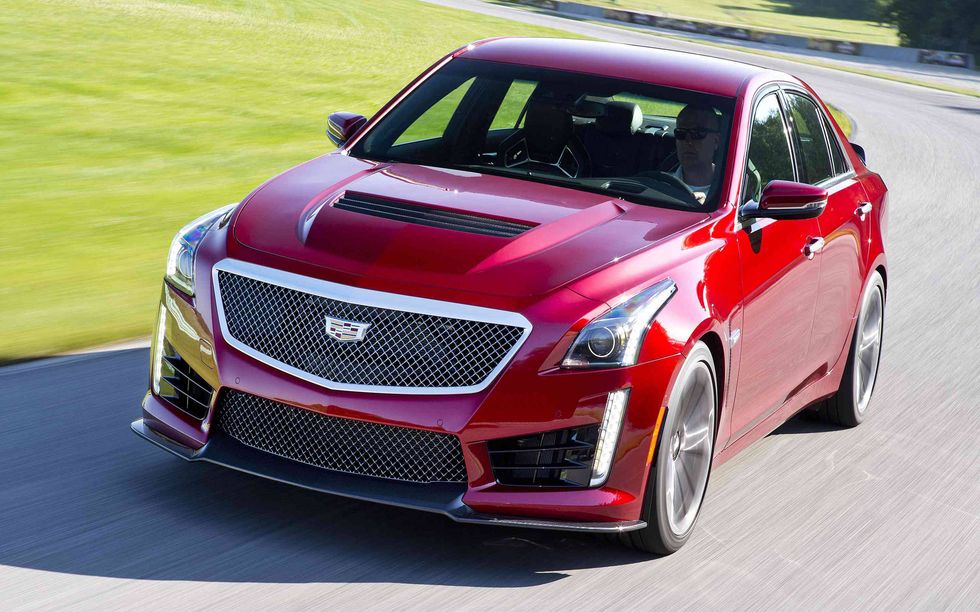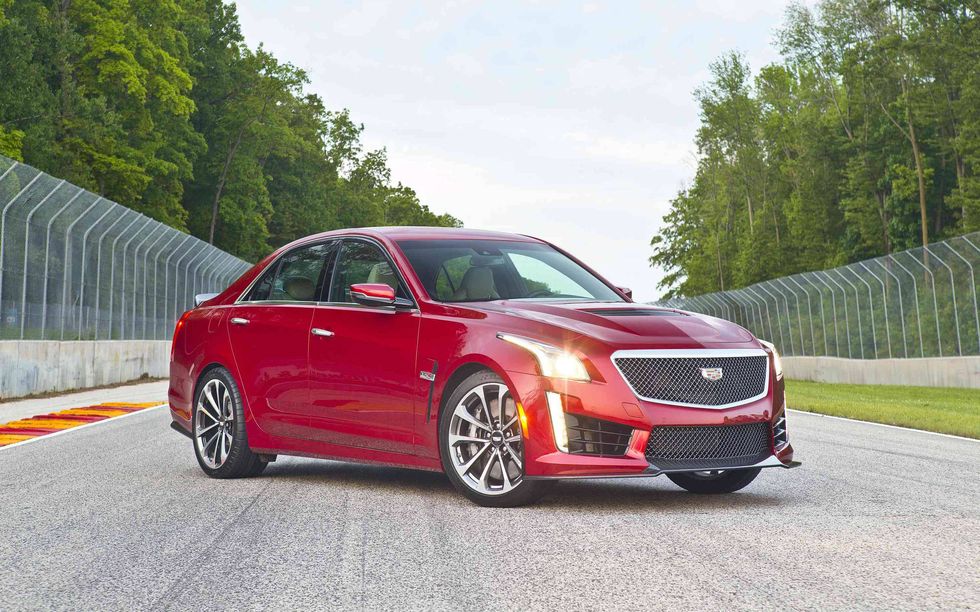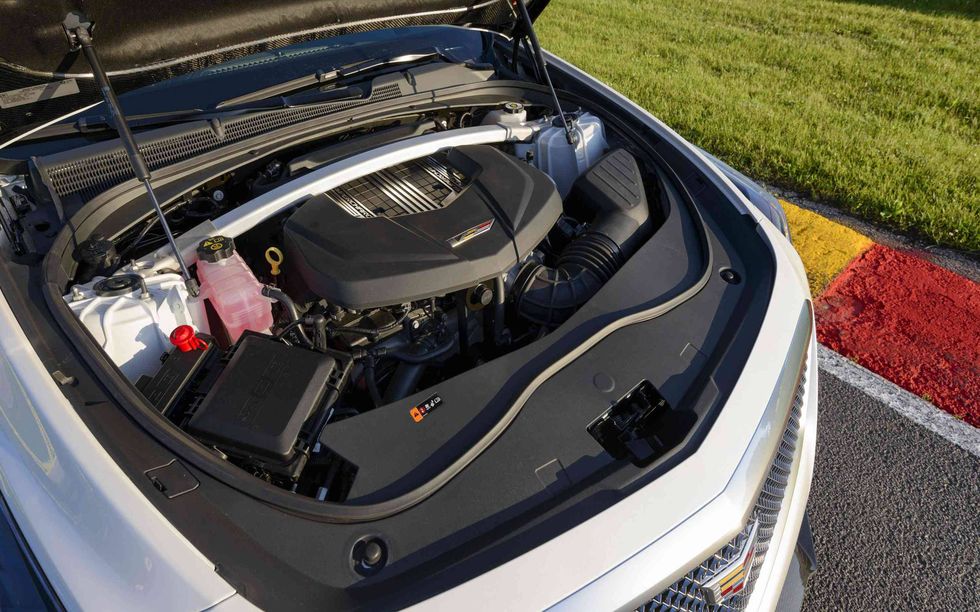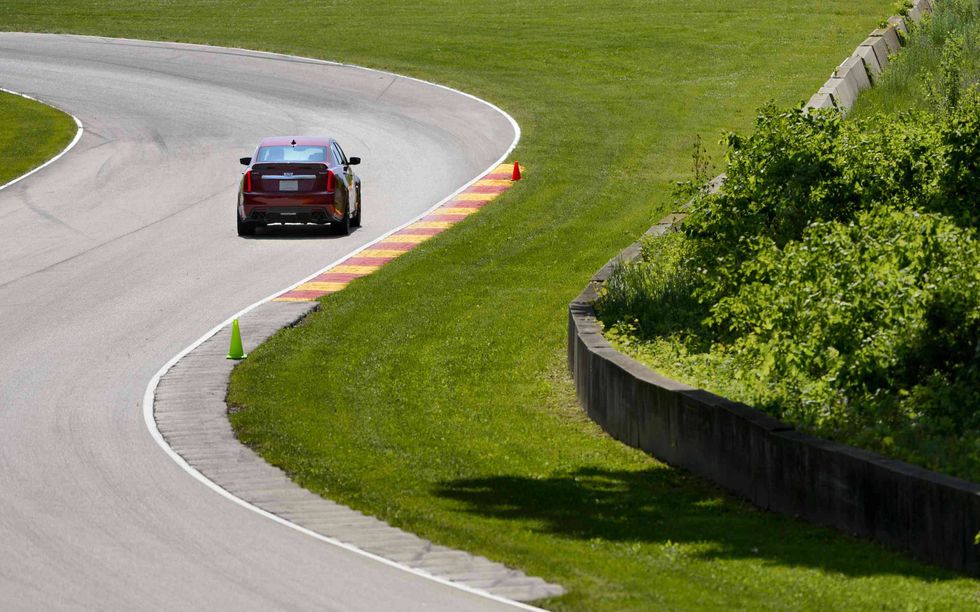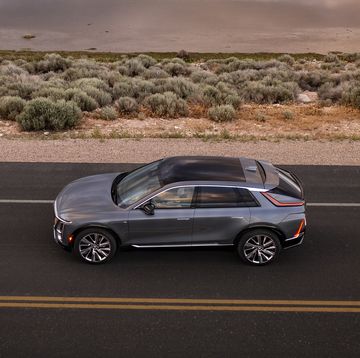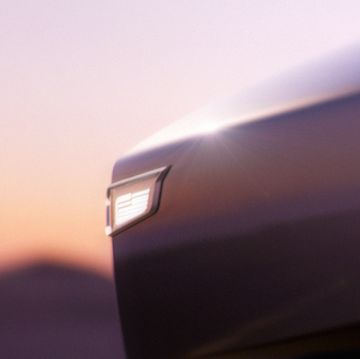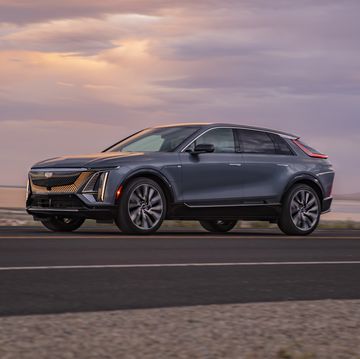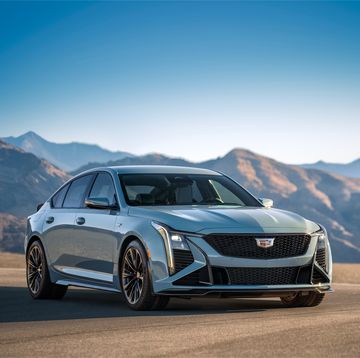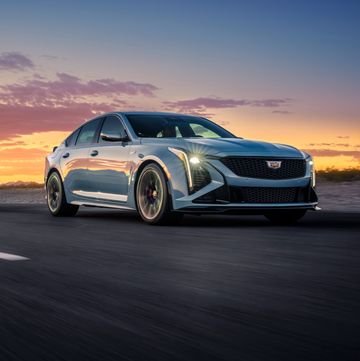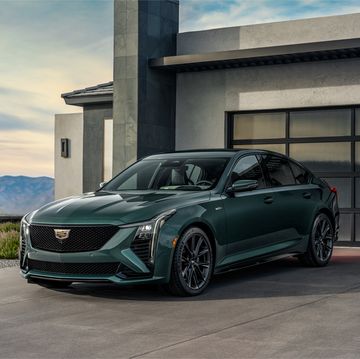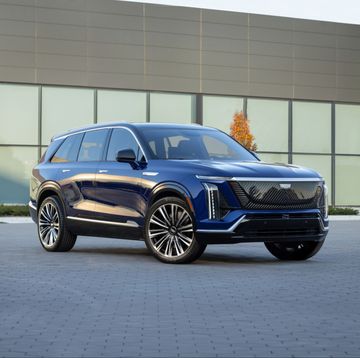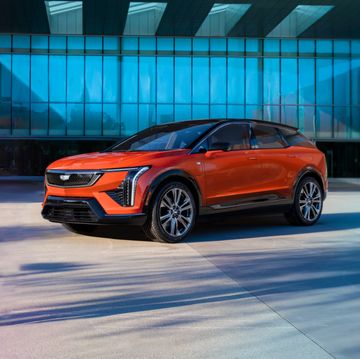Think of the CTS-V as a more practical Corvette Z06, one with four doors.
You already know the bare bones about this car: the same 6.2-liter supercharged V8 as the Corvette Z06 (minus the dry sump lubrication), making 640 SAE-certified hp and 630 SAE-certified lb-ft of torque sent to the rear wheels through a Hydramatic 8L90 eight-speed automatic and an electronic limited-slip diff; magnetic ride control at all four corners; ZF electric power steering that varies the level of assist depending on demand and conditions; traction control with more settings than a bridal registry; and a nice Cadillac-designed exterior that won’t be mistaken for anything else on Earth.
What’s It Like To Drive?
Oh man.
First of all, look at the numbers: 0-60 in 3.7 seconds (good!), quarter mile in 11.6 seconds at 126 mph (very good!), 1.00 g lateral acceleration (outstanding!) , top speed 200 mph (whaaaaa???).
This thing will go 200 mph right out the showroom door… 201.8 to be exact, which is what Cadillac engineer Brian Wallace did at the Transportation Research Center in Ohio. All for a sticker price of $84,990. If you went just by those numbers alone, the coming CTS-V outshines the competitors in almost every category. If you go by all the parameters that make a car a success, the CTS-V might win there, too.
To show us how all that performance potential stacked up on the road, Cadillac took us to Road America, a horsepower track if ever there was one, and horsepower is what this car has in spades, as well as deuces, clubs and whatever else they measure horsepower in. Our first session behind the wheel came, not at the track, but on the road to Road America, a wide Interstate nearly devoid of traffic, except for a couple trucks and a few citizen sedans all cowed into submission by what was no doubt draconian enforcement of the ridiculous speed laws in this state (55 mph???). We got our chance way out in the middle of corn- and dairy farm paradise when our co-driver pulled off the Interstate for the driver swap. We slithered into the tightly bolstered bucket seat, cinched-down the seat belt and stared ahead. We had to cross a road perpendicular to the Interstate then go down the onramp and back up to the highway. The road might have been a little bumpy, too. So naturally we disabled all traction assistance and floored the thing.
Yow! This car has 640 hp all right, and it felt like we were putting every single one of them down to the pavement right then and there. The rear end wandered around a little with all that power, almost scarily, as we briefly contemplated being known forever as, “Oh yeah, that idiot who wiped out the first CTS-V.” But a little counter steering -- without lifting -- and some barely noticeable assist from the active traction control kept it in line and off we whooshed, down the onramp at what felt like about Warp Factor 6. This is no ordinary domestic performance sedan.
Indeed, Cadillac proudly displayed a little chart comparing this car to its main competitors: the BMW M5 and the Mercedes AMG E63. According to the chart it had: more power, more torque, higher top speed (again, 200 mph!), quicker acceleration, and for all we knew, a higher grade-point average and did better in singles bars than those Europeans.
How does Cadillac do all that? Apparently it was through what is known as “engineering.” The 2016 CTS-V sits on the all-new Alpha platform shared with the ATS and the coming CT6. The platform itself has been significantly strengthened in this application for more driving precision. Structurally the biggest change is a big aluminum plate bolted underneath the front end called a shear panel. Other Alpha-platformed cars don’t get the shear panel. Nor do they get the CTS-V’s strut tower brace or the braces that connect the motor rail to the engine cradle.
“All this is an effort to triangulate the front of the car,” said chief engineer Tony Roma. “It’s as stiff as it could possibly be.”
Engineers also retuned all 10 bushings in the front, replacing six of them with ball joints.
“Any unwanted toe change would really move a car like this around with such a big sticky tire,” Roma explained, referring to the CTS-V’s front 265/35ZR19 and rear 295/30ZR19 Michelin Pilot Super Sport summer tires.
There was interesting engineering in the rear, too. The half shafts are of unequal lengths to eliminate axle tramp under acceleration. The electronic limited-slip differential can go from open to “essentially locked,” depending on what you need.
“It understands if you’re asking the car for a certain amount of aggression,” said Roma.
And Brembo cooked up a bespoke set of steel disc brakes: 15.4 inches in front and 14.4 rear. It has the same five-mode traction control used on Camaro and Corvette models, too.
We kept all of this in mind at Road America. It took us a couple laps (and some pointers from an engineer) to realize that we couldn’t shift quicker than the transmission in automatic could shift. We maybe would have liked some downshifts sooner, but these were soon enough.
The car, not to beat this into the ground, has horsepower. On RA’s long, long front straight, we had it floored just before we apexed the last corner entering the straight and hit 153 mph at the “suggested braking point.” We could have stayed on it longer, hit 155 and still made the next corner, but what’s 2 mph between friends? The car swayed just a little under heavy braking, and also under floored acceleration, but never scarily.
Once you click on track mode, push the traction control button twice in five seconds and you’re in Performance Traction Management, which is where you want to be at Road America. There are five settings here and we kept it in number three, which still had a stability intervention component. We only noticed it a couple times intervening in the motorcycle chicane just before turn 10 as we braked into and powered out of that tight section of track. The steering was as precise as a sedan this big will likely get, and the body roll control was likewise solid. Otherwise, it was just a really fast sedan through all 15 turns. Given a few hundred more laps, we could have carried a lot more speed into Carousel and up through Kettle Bottoms, but as it was we had a great time.
If it has a flaw as a track car, it’s weight. The CTS-V weighs 4,145 pounds, which is a little heavy to be flinging around on a racetrack. But just being able to fling this four-door sedan around on one of America’s great tracks in the first place is pretty amazing.
Do I Want It?
Heck yeah, you want it. The thing we want to do now is line up a track day with this, the M5 and the AMG E63. Now that would be a fun day. America is on the grid in the luxury performance sedan contest.
Vehicle Model Information
ON SALE: Late summer
BASE PRICE: $84,990
POWERTRAIN: 6.2-liter supercharged V8, longitudinally mounted, rwd
OUTPUT: 640 hp at 6400 rpm, 630 lb ft at 3600 rpm
CURB WEIGHT: 4145 pounds
0-60 MPH: 3.7 seconds (mfg.)
FUEL ECONOMY: n/a
PROS: Ridiculously fast, composed and lovely to listen to
CONS: We're thinking...

